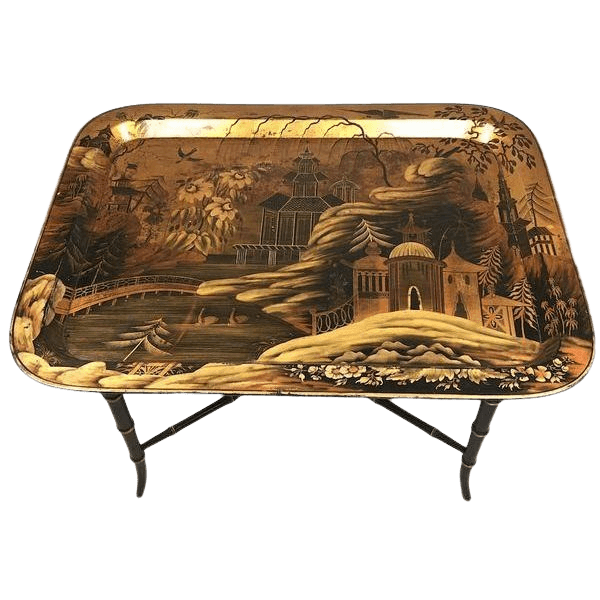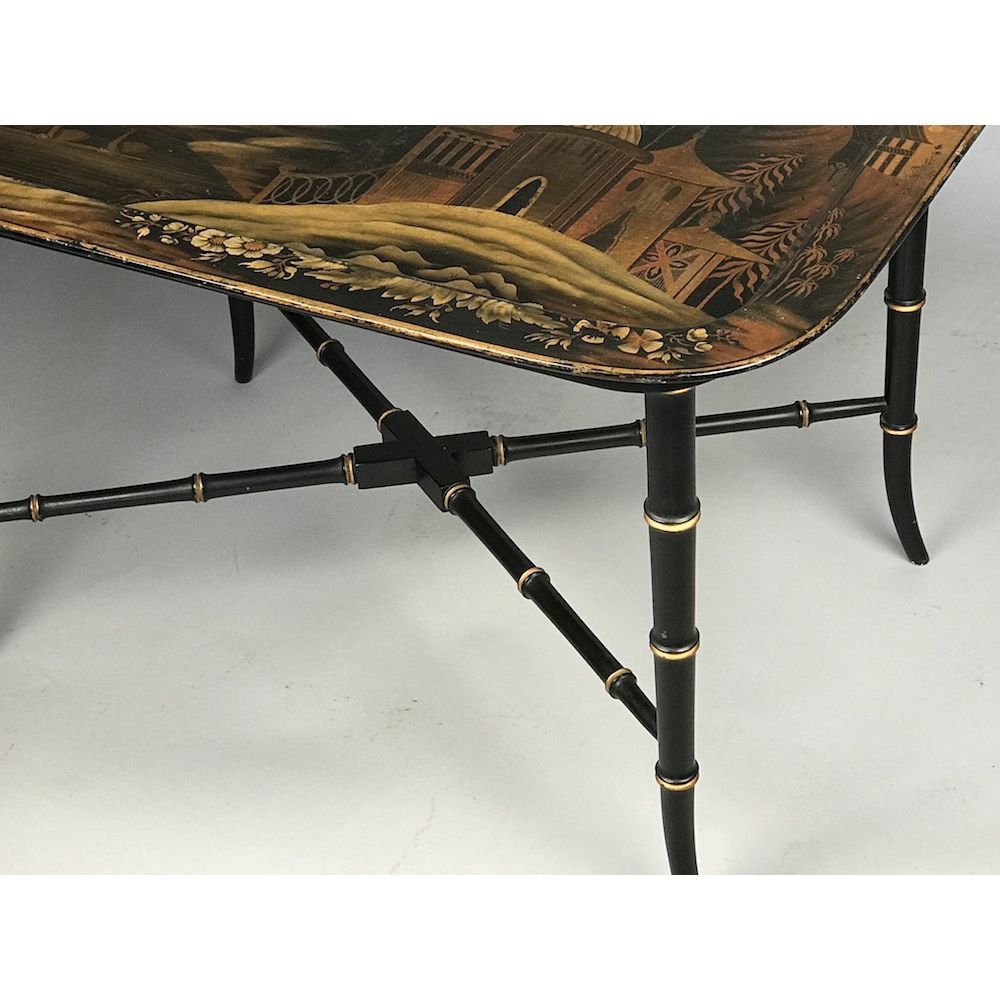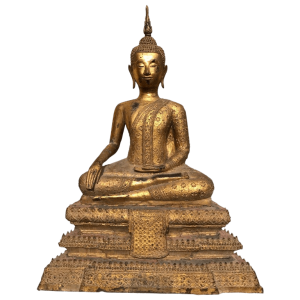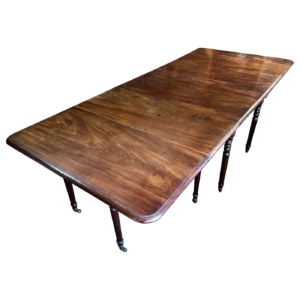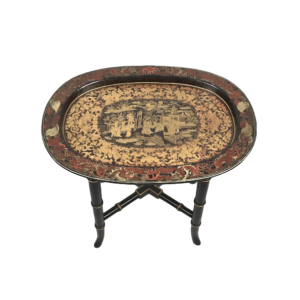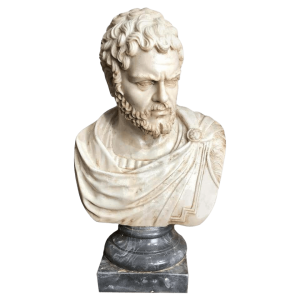Description
A Regency-period polychrome papier-mâché chinoiserie tray on a later bespoke ebonised stand.
Antique (late Georgian) tray table, circa 1810.
In excellent and original condition showing an exotic romantic chinoiserie landscape with pagodas, rockwork, a lake, birds and foliage.
Papier-mâché is French, literally meaning “paper – mashed up”; a material consisting of paper pulp, sometimes reinforced and pressed with textiles, bound with an adhesive, such as glue, starch, or wallpaper paste. A popular medium during the Regency period in England in the making of high quality and sophisticated trays decorated in the fashionable chinoiserie taste. The practice degenerated somewhat during and after the reign of Queen Victoria when these trays became mass produced. The fine Regency chinoiserie decoration was typically replaced with poor quality painting, sometimes inlaid with mother-of-pearl fragments.
Ref:
Japanned papier mache and tinware 1740-1940, Yvonne Jones (2012).



